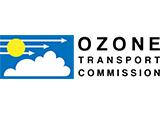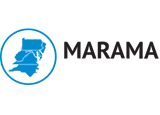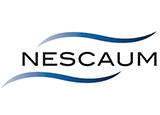State Implementation Plans
NHDES’ approach to attaining and maintaining federal air quality standards.

Congress designed the Clean Air Act (CAA) to protect public health and the environment from different types of air pollution caused by a diverse array of pollution sources. The CAA assigns the primary responsibility for air pollution control to state and local governments. New Hampshire fulfills its requirements for the CAA through a constantly evolving state implementation plan (SIP), delegation of federal standards, development of state plans for specific types of sources, adoption of administrative rules, and issuance of site-specific orders. Beyond the implementation of the CAA, the New Hampshire legislature has enacted state statutes, which contain requirements specific to New Hampshire air pollution such as the state air toxic regulations, the requirements for air emissions of PFAS impacting soil and water, and the ban on burning construction and demolition materials just to name a few. Many of the day-to-day regulatory functions and contact with sources of air pollution in New Hampshire occurs at the state level under provisions of the New Hampshire SIP and state statutory authority.
NH State Implementation Plan
When the EPA establishes or revises a National Ambient Air Quality Standards (NAAQS) for criteria pollutants, it sets in motion a series of actions to ensure that air quality throughout the country meets those standards. Within two years, EPA must designate areas as meeting (attainment) or not meeting (nonattainment) the standard. Within three years, all states must submit an infrastructure SIP, to show they have the basic air quality management program components in place to implement a new or revised NAAQS. SIPs are the mechanism by which states set emission limits and allocate pollution control responsibility among sources to meet the limits on ambient concentrations of criteria pollutants. This is accomplished through a process that involves collecting emissions inventory, monitoring ambient pollutant concentrations, modeling emissions to determine reductions needed to attain the NAAQS and imposing appropriate emission limits on new and existing industrial sources.
In addition, if an area has been designated as nonattainment for the standard, the state has 18-36 months after designations, to submit a nonattainment area SIP. Each nonattainment area SIP must outline the strategies and emissions control measures that show how the area will improve air quality in order to meet the NAAQS. Once a nonattainment area has air quality meeting the NAAQS, the state can request that the area be redesignated to attainment. Several conditions must be met. For example, EPA must determine that the improvement in air quality is due to permanent and enforceable emissions reductions. EPA must have approved the state’s maintenance plan, which must provide for maintaining clean air in the area for at least 10 years after the redesignation. Also, the state must have met all applicable implementation plan requirements for the area. Finally, the CAA requires a transport SIP to control emissions that drift across state lines and harm air quality in downwind states.
While there is only one SIP, NHDES develops each of the SIP documents describe above to meet the CAA requirements and then prepares a document often referred to as a SIP revision. The public is provided with opportunities to comment on SIP revisions prior to NHDES submitting the documents to EPA for approval. In addition, since New Hampshire is included in the Ozone Transport Region, New Hampshire must submit SIPs for the pollutants nitrogen oxide (NOx) and volatile organic compounds (VOCs) that form ozone regardless of attainment status. Specified controls (e.g., Reasonably Available Control Technology (RACT) for existing sources, and Lowest Achievable Emission Rate (LAER) and offsets for new sources) are required in the OTR. Links to SIP revisions related to NAAQS can be found on the criteria pollutant page.
EPA Approval Status
40 CFR Part 52 Subpart EE lists the EPA approval status of New Hampshire’s CAA requirements. Pollutant-specific SIP documents can be found on the criteria pollutants page.
Public Notices
The public is provided with opportunities to comment on state implementation plan revisions and state plans.
Delegation of Federal Standards and Development of State Plans
In order for New Hampshire to enforce federal standards on New Hampshire facilities or include the standards in permits for smaller sources, New Hampshire takes delegation of most New Source Performance Standards (NSPS) and National Emission Standards for Hazardous Air Pollutants (NESHAPs). Navigation tools are available from EPA to help owners and operators in certain industries determine their personalized requirements by answering questions about their equipment or facilities.
Section 111 of the CAA established a mechanism for controlling air pollution from categories of industrial sources such as power plants, incinerators, and municipal solid waste landfills. These federal regulations include minimizing pollution from new or expanded sources as well as pollution from existing sources covered by emission guidelines. States use the federal emission guidelines to develop state plans for existing sources that are at least as stringent as the federal requirements. New Hampshire has used emission guidelines to develop state plans for municipal waste combustors (MWC) and other solid waste incinerators (OSWI). New Hampshire has also taken delegation of the federal plan for sewage sludge incinerators (SSI) and intends to do the same for municipal solid waste (MSW) landfills once one has been developed. In the past, New Hampshire has made negative declarations to EPA for emission guidelines that covered other industrial sources not in operation in New Hampshire or have closed. State plans include administrative rules, inventory of facilities and corresponding emissions, state progress reports to EPA and other general SIP requirements.
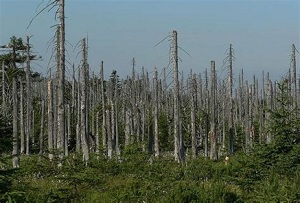 New Hampshire’s Acid Rain Program
New Hampshire’s Acid Rain Program
Acid rain is more correctly referred to as acid deposition because in addition to rain, acid can deposit as snow, sleet, hail, particles, gasses and water vapor. NOx and SO2 gas emissions from manmade and natural sources react in the atmosphere to form nitric and sulfuric acids. Winds can carry these pollutants hundreds of miles from the emissions sources where they are deposited to the earth. Acid rain damages aquatic life and ecosystems, acidifies forest soils, damages property, and forms from pollution that degrades visibility and harms public health. In 1985, the state Legislature established New Hampshire’s Acid Rain Control Act, which authorized NHDES to develop an acid deposition control program which was codified in Env-A 400, Acid Deposition Control Program. Nationally, EPA has made extensive progress to address air pollutants from the power sector through its various regulatory programs such as the Acid Rain Program, Cross-State Air Pollution Rule (CSAPR) and the Mercury and Air Toxics Standards.
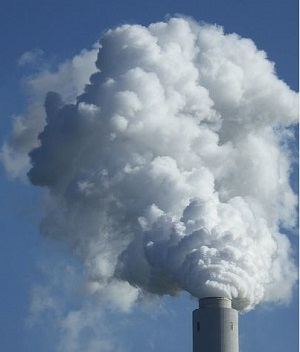 Federal Standards and State Plans for New and Existing Sources
Federal Standards and State Plans for New and Existing Sources
Section 111 of the CAA established a mechanism for controlling air pollution from categories of industrial sources such as power plants, incinerators, and municipal solid waste landfills. These federal regulations include minimizing pollution from new or expanded sources (New Source Performance Standards) as well as pollution from existing sources covered by emission guidelines. NH is a delegated state for many of the NSPS, meaning that NHDES incorporates the NSPS requirements in permits and enforces many of the provisions contained in the federal regulations. States use the federal emission guidelines to develop state plans for existing sources that are at least as stringent as the federal requirements. NH has developed a state plan for municipal waste combustors (MWC) and other solid waste incinerators (OSWI). NHDES has been delegated the federal plan for sewage sludge incinerators and plans to take the federal plan for municipal solid waste (MSW) landfills.
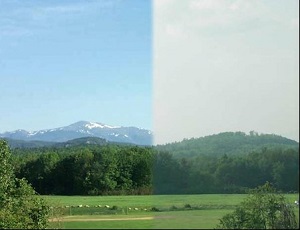 Regional Haze refers to periods when synthetic air pollutants impair visibility. Particles and some gasses block or reflect light, obscuring views of distant objects. The federal regional haze rule aims to reduce synthetic air pollutants to improve visibility at over 150 national parks and wilderness areas with the goal of achieving natural conditions by 2064. In New Hampshire, this includes the Great Gulf Wilderness and the Presidential Dry River Wilderness, both of which surround Mt. Washington. New Hampshire has submitted the state’s SIP for the second implementation period (2018-2028) as well as the progress report for the first implementation period (2008-2018) to the EPA for approval. Refer to the submitted SIP documents for details.
Regional Haze refers to periods when synthetic air pollutants impair visibility. Particles and some gasses block or reflect light, obscuring views of distant objects. The federal regional haze rule aims to reduce synthetic air pollutants to improve visibility at over 150 national parks and wilderness areas with the goal of achieving natural conditions by 2064. In New Hampshire, this includes the Great Gulf Wilderness and the Presidential Dry River Wilderness, both of which surround Mt. Washington. New Hampshire has submitted the state’s SIP for the second implementation period (2018-2028) as well as the progress report for the first implementation period (2008-2018) to the EPA for approval. Refer to the submitted SIP documents for details.
NH Statutes
Did You Know?
Did You Know?
New Hampshire is part of the Ozone Transport Region (OTR). Therefore, NHDES must submit SIPs for the pollutants that form ozone regardless of the attainment status of the state for those pollutants. This includes nitrogen oxides (NOx) and volatile organic compounds (VOCs).





